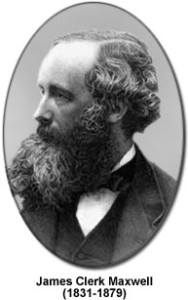James Clerk Maxwell was a mathematical physicist and scientist who is well- known for his “Maxwell’s Equations”. His works on electromagnetism and light during the 19th century significantly changed the course of physics in the 20th century. His exceptional scientific knowledge and skills were already recognized when he published his first paper on geometry at the age of 14.
Early Life and Education
Maxwell was born on June 13, 1831 in Edinburgh, Scotland. His mother died from cancer when he was 8 years old. In 1841, he was enrolled to the Edinburgh Academy. His father, with whom he was close growing up, died in 1855. He was married to Katherine Mary Dewar in 1858.
In 1847, Maxwell studied at the University of Edinburgh. By 1850, he pursued his education at Cambridge University. It was in this university that he won various awards such as the Smith’s Prize and Adams’ Prize. He graduated from Cambridge University in 1854. He then became a Fellow at the Trinity College that same year. It was in this institution that Maxwell began researching into two topics that he would investigate throughout his life: color and magnetism.
Life as Professor and His Publications
Maxwell began his teaching profession when he was elected as a Fellow of the Royal Society of Edinburgh in 1855. In 1856, he became a professor of natural philosophy at the University of Aberdeen’s Marischal College. In 1860, he became a professor at the King’s College in London. His five years at this institution were regarded as the most scientifically prolific years of his career. He worked on numerous fields of studies including gases, electromagnetism, electricity and electromagnetic radiation.
He resigned from King’s College in 1865. He spent a few years of his life on his home in Scotland but he used to return to England at least once a year to continue his academic role at Cambridge University. In 1871, he was appointed as the first Cavendish Professor of Physics at Cambridge.
Here are the most notable works and publications by Maxwell:
1855: Experiments on Colour, as perceived by the Eye, with remarks on Colour-blindness; On Faraday’s Lines of Force
1859: Maxwell-Boltzmann Distribution Law
1865: A Dynamical Theory of the Electromagnetic Field
1867: On the Dynamical Theory of Gases
1873: Treatise on Electricity and Magnetism
Greatest Scientific Contributions
Maxwell’s Equations predict that waves of oscillating electric and magnetic fields travel in space roughly equivalent to the speed of light. It is for this electromagnetic theory that Maxwell was most commonly credited with fundamentally changing the course of physics. According to Albert Einstein, one of the greatest and most famous scientific minds of the 20th century, “One scientific epoch ended and another began with James Clerk Maxwell.”
Related articles:
Hans Christian Oersted (1777-1851): Pioneer of Electromagnetism




